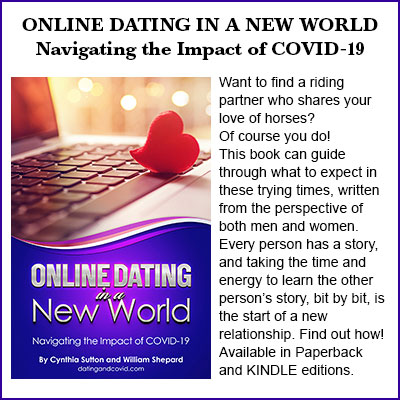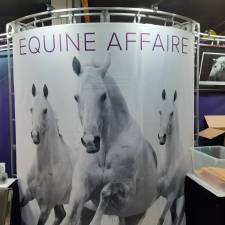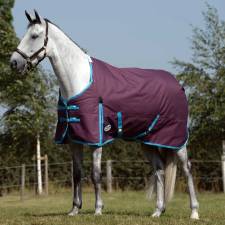
April Anderson, Head Instigator of production company Art As Air, shares the story of how the documentary Tails of Iceland, featuring Icelandic horses and their connection with the Icelandic people, came to be. The film premiered in Reykjavík in March 2019 and will be screened at the EQUUS Film Festival in Williamsburg, Brooklyn, USA, in December.
We began our Tails of Iceland journey of creation with the purpose of exploring and filming the differing and varied special relationships between the Icelandic people and their unusual horses. It is about the culture and the connection, and there have been thousands of stories in the hundreds of years since these horses were brought to this fiercely unforgiving and magnificent island. Our goal was to capture some of the tales and a lot of the history, but more importantly, to illustrate how deep this unique kinship goes.
Iceland. To the rest of the world, just speaking the name of this tiny country brings to mind images of fierce Vikings, harsh climate, erupting volcanos and lots of…ice. Kind of inaccurate, as much if it is covered with a beautiful brilliant green moss for a good part of the year.
Adding the romance and mystery of Nordic and Celtic mythology and lore to this delightful travel stew, you’ve got the recipe for the adventure destination of dreams, complete with a different lunar landscape every few miles.
Then there are the people of Iceland. Currently numbering approximately 350,000, they are a hardy lot, having carved out a unique culture over centuries of coexistence with the island’s unpredictable nature. In a time of turmoil and escalation of man’s inhumanity toward man, this country and its people shine like a beacon of hope, representing a simpler societal construct of acceptance, hard work, community and self-sufficient survival.
Standing beside the two-legged inhabits of the land are the horses. There are about 100,000 horses living in Iceland. There are just as many more who have been exported or bred abroad, and who, by law, are unable to ever return to the island once they’ve left. The resulting lack of outside diseases makes the Icelandic horse one of the healthiest and purest breeds in the world. But it’s their personalities that are a big factor in setting them apart.
Inquisitive and smart, they’ll follow you around like a puppy, bumping and nudging if your attention is perted, and sticking their velvety noses into everything. Along with their shorter stature, the five gaits for which they are known, which is two more than those of an average horse, make this a singular breed. These gaits are part of their birthright and the only other horse who displays such natural gait persity is the Mongolian horse, which they are rumored to be descended from.
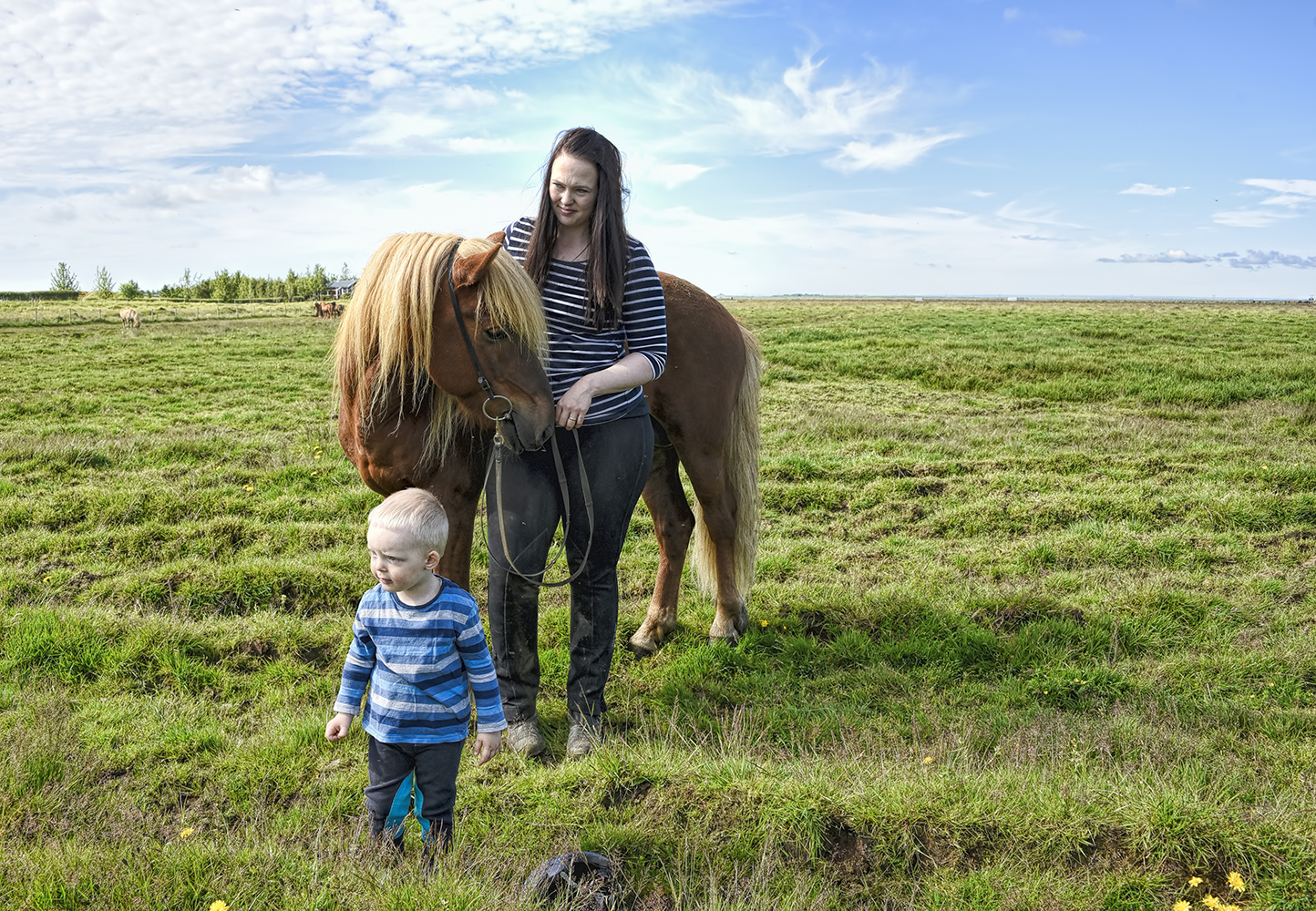
A thousand years ago, when these horses were first brought to Iceland from Scotland, Ireland, Mongolia or Norway, depending on who you talk to, they were designated as work animals, to make life more livable for early settlers.
In modern times, especially within the last few decades, much of the focus has shifted from the beast of burden to encompass the companion, competition and friendship aspects. The nature of the connection between these sturdy animals and their people runs deep, as they face the elements and challenges of life in Iceland together.
The film, Tails of Iceland, began (and remains) as a labor of love. Exploring some of the modern-day stories and the history of the amazing Icelandic horse, as told by those who love them, quickly became a passion for all involved. For those of us who are not native Icelanders, it was as though we fell into a fantasy world better than anything imagined, as the stories and experiences opened up to us like an extraordinary exotic flower. Even for our native Icelandic producers, seeing their country and horses through our eyes offered them a fresh view and new appreciation of what they have. Capturing as many tales as we could doesn’t convey all of the magic, but it’s a darned good start. We hope you will watch and be transported….
In the beginning:
On the return flight from our first trip to Iceland in 2014, my husband Martin and I met a newlywed twenty-something native Icelandic couple on their way to their honeymoon. After chatting the whole trip, we exchanged contact information, and Facebook being the great equalizer at that time, we all became “friends.” We then came to learn that the young man, Kári Örn Hinriksson, had been battling a rare, virulent type of cancer since the age of seventeen and, at that time, had been given two years to live. Ten years later, Kári was still dealing with the disease and fighting a proper fight to stay alive, but he was also using this as a marker to really live a life that is full and good.
When we decided to return to Iceland the following summer of 2015, we spent a day with Kári and Júlíana, who introduced us to their family horses. Kári’s bond with them was evident even in those few minutes watching him chase them around and talk about how each got their names. It was a magical day that served to enhance our curiosity and desire to learn more about this country, the people and of course, the horses.
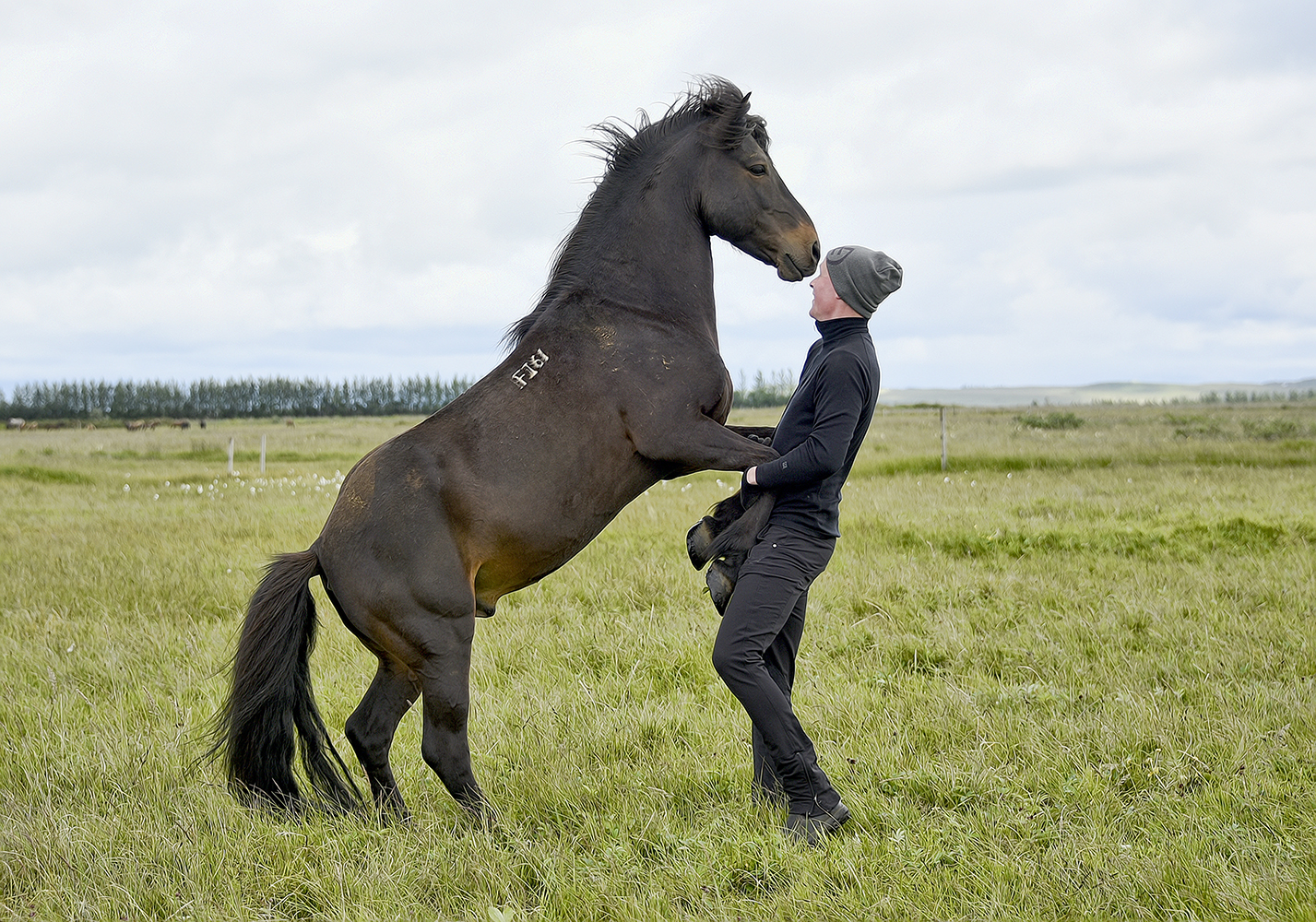
We received word six months later that Kári had passed away of complications. Among many other things, he left behind the gift of a friendship between us, his mother Erna Arnardóttir who is a lifelong horsewoman, and his father, Hinrik Gylfason.
In 2017, I was looking for inspiration for a new art project, and after moment of epiphany during a conversation with Erna one day, we decided to begin a journey together to create a documentation of the passion and relationships between the horses of Iceland, the people, and how they are intertwined.
We are inspired by the memory of Kári, who had, in our early talks, voiced one of the deeper meanings of what it is to be alive: “Being remembered. When you leave this earth, you can tell yourself that you left something behind.”
We know with absolute certainty that he already has, and we are honored to dedicate this project in remembrance of Kári.
Tails of Iceland Creators:
April Anderson, Erna Arnardóttir, Martin Chytil
Text and photos: April Anderson, Intro: Eygló Svala Arnarsdóttir
This article originally appeared on Horse of Iceland and is published here with permission.
There are other interesting articles for you to read in our section on Recreation & Lifestyle and in Horse Breeds.






